Living in the Midwest, I love a warm-weather escape just as much as the next person. But there’s a big difference between “Ahh, this is nice” and “Am I literally melting?!” While we hear plenty about really cold places like Antarctica and Siberia, what about the destinations on the opposite end of the spectrum?
If you’ve ever stepped outside in July and thought, “Wow, it’s way too hot out here,” just know, it could be worse. Much worse. From the blistering sands of Death Valley to the steamy Australian countryside, these are the hottest places on Earth, where the temperatures soar, the sun blazes, and staying cool is a serious challenge.
Death Valley, California
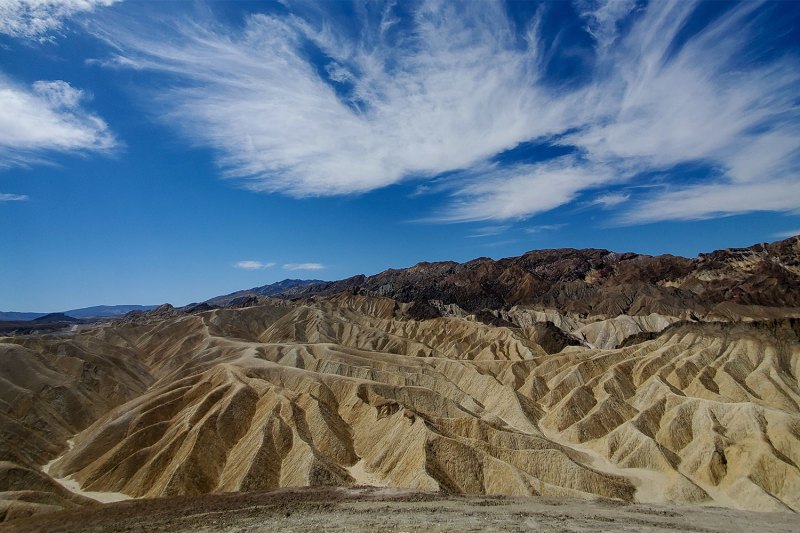
While somewhat disputed, the hottest temperature on record was registered in the blazing heart of America. In July of 1913, in Furnace Creek, California, the mercury read 134 degrees Fahrenheit. Some think a sandstorm caused superheated material to confuse the weather equipment. Others think it was just a hotter-than-normal kind of afternoon. Either way, the tiny town within the larger Death Valley is no stranger to scorching weather, registering record temperatures almost annually.
Flaming Mountain, China

You can’t call a range the Flaming Mountain unless they’re practically on fire. The lifeless-looking strip of red topography resides within the Taklamakan Desert and routinely breaks 122 degrees Fahrenheit. And with so much radiation from the rocks, it can often feel hotter. An unverified soil surface reading in 2008 read 152.2 degrees Fahrenheit!
How do locals cope? Long ago, the Chinese would beat the heat with silk or even bamboo clothing. The latter material is still used to cover beds and things like car seats today to insulate from the heat. There’s also a tendency to enjoy a cup of mung bean juice, which is believed to cool your core temperature.
Lut Desert, Iran
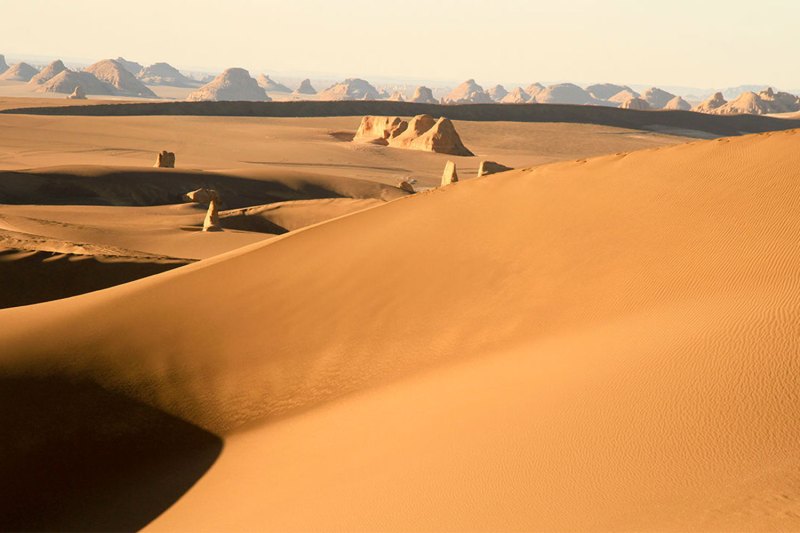
Iran’s Lut Desert looks like another planet with its dramatic plateaus and countless colossal sandcastles that dot the salty desert. One of the hottest areas within the Lut is called Gandom Beryan, Persian for “toasted wheat.” It’s believed that here, some wheat was left out and roasted by the sun in a matter of a few days.
Sahara Desert
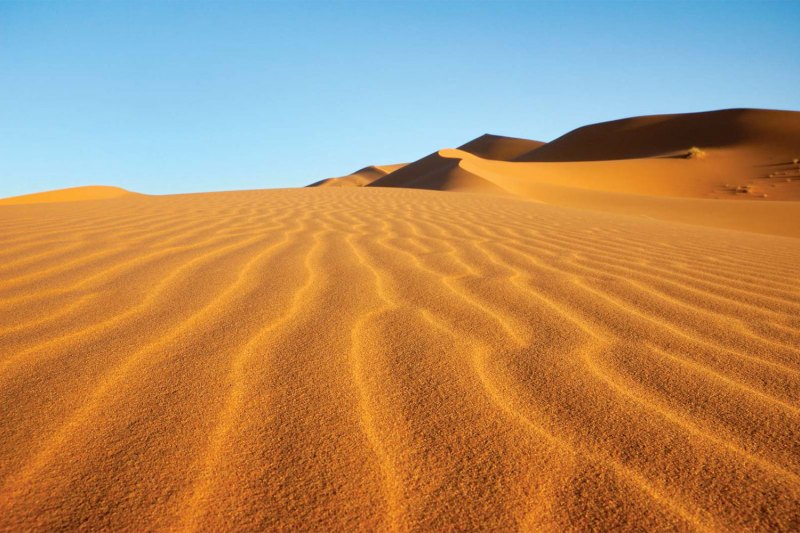
The Sahara is the largest hot desert on Earth, pretty much making up the entire top half of Africa. It’s a sunbaked mass of some 3.6 million square miles that is easily identifiable from outer space. It’s a place of few clouds and harsh heat. In fact, where there is water, it evaporates at the quickest rate anywhere on Earth.
There is sand almost everywhere, and it draws heat immensely. Ground temperatures often surpass 170 degrees Fahrenheit in the Sahara, warranting special shoes or, better still, a trusty camel. Many of the top claimants for the hotly contested “highest temperatures in Africa” crown are cities either within or on the edge of this vast sea of sand.
El Azizia, Libya
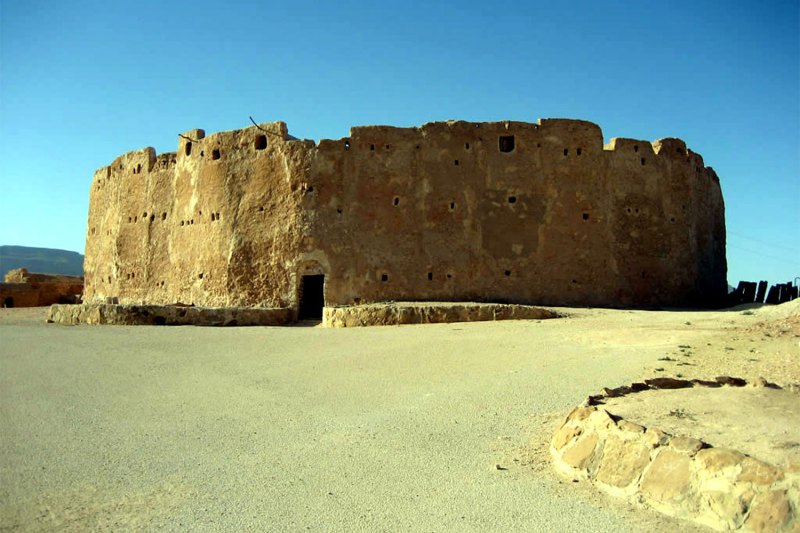
This town of about 25,000 in northwestern Libya was believed to have the hottest temperature recorded on Earth for many years until it was disproved back in 2012. Regardless, it’s one of the hottest places on Earth, as well as an ancient trade route that led up to nearby Tripoli.
The landscape is pretty quintessential when we think of scorching deserts, with its golden sand dunes, occasional oases, and cloudless skies. Here, residents tend to be much more active at night, taking on chores and going to the market in the wee hours, when it’s more tolerable outside.
Sonoran Desert

A cactus-strewn expanse in the southwestern U.S. and northern Mexico, the Sonoran Desert bakes and is one of the hottest places on Earth. It’s a surprisingly diverse place in terms of biology, and it’s even home to a rare jaguar population. The rather large region is home to Phoenix, a city so hot most simply stay indoors during the summer months. Here, in July, temperatures average in the mid-90s, and it’s quite common to break 115 Fahrenheit during peak heat hours.
Bangkok, Thailand
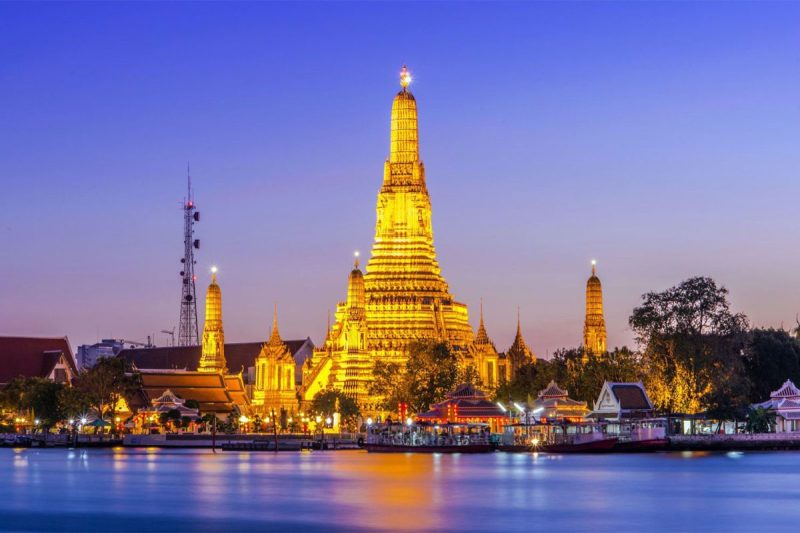
The heat of Bangkok is a deceptive one. The Thai city is never setting any all-time highs, but it’s so consistently warm year-round that it’s one of the hottest inhabited places around. And there’s often very little relief at night when so many cities cool off. Locals like to combat the warmth with things like boat transit, fresh fruit juices, squirt guns (which are especially popular here), or food dishes that are so often spicy they distract you from the hot weather.
Kuwait City, Kuwait
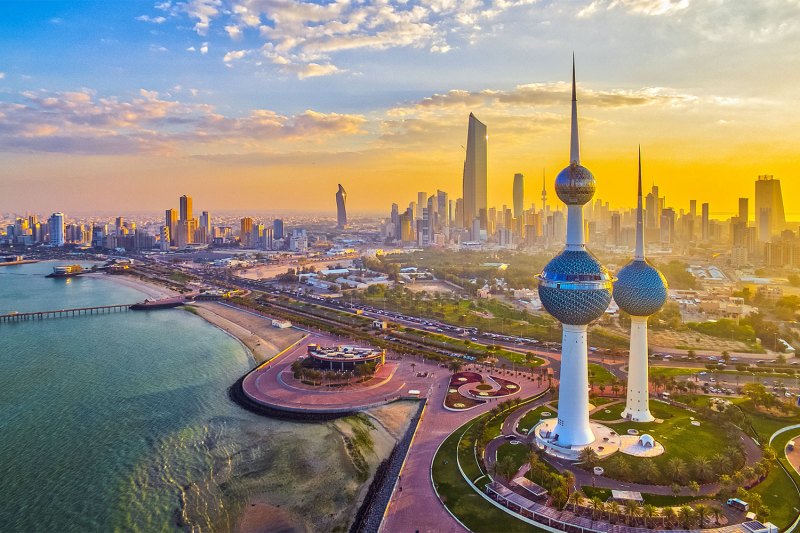
The capital of Kuwait is one of the hottest cities in the Middle East and the world. With a population of more than 4 million, it’s also one of the hottest metropolises out there. Here, average summer highs hover around the stifling 115 Fahrenheit mark. Strangely, it’s also quite cold during the short winter, with lows dipping into the 40s. The heat, which dominates most of the year, can feel even more extreme due to common sandstorms.
Dallol, Ethiopia

Extremely remote and set in the far north of Ethiopia, Dallol is a tiny village known for setting records. It’s the hottest year-round spot in the world, with the average annual high temperature coming in at a blistering 106.1 degrees Fahrenheit. A study that took place over six years in the 1960s determined that the record low over that stretch was a remarkable 70 degrees Fahrenheit.
The Amazon
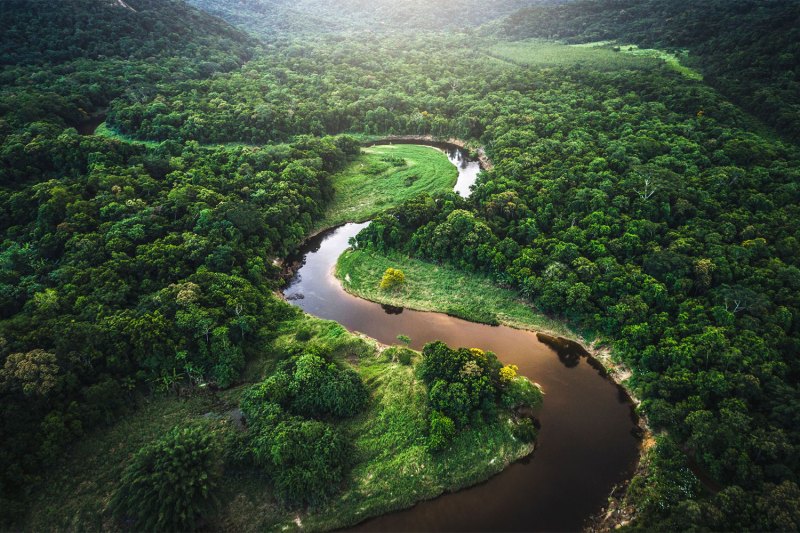
Earth’s most famous tropical rainforest may be veiled in trees, but it’s still damn hot and humid. Granted, it’s misty, and rainfall is common, but it’s also very close to the equator and quite toasty. A thick type of heat pervades here, the kind you can feel in your lungs with every breath. With an average temperature of more than 80 degrees Fahrenheit, it’s always warm and amplified by off-the-charts humidity levels.
Khartoum, Sudan

Khartoum, the capital of Sudan, is and for much of its history always has been a crossroads. Sitting where the Blue and White Nile converge to form the famous Nile River, Khartoum is a sweltering city. Among the hottest major cities in the world, the average temperature here during the day is a jaw-dropping 98 degrees Fahrenheit. Even during the coldest months of the year, the city’s average high temperature never falls below 86.
This city, as mentioned earlier, is no backwater either. Containing not only the nation’s government but also 4 million residents in the city alone — and as much as an additional 5.5 million, if satellite cities are included — it’s hard to imagine such a prosperous city existing in conditions like this.
Mecca, Saudi Arabia

Mecca is a place truly like no other. Islam’s Holy City, a core element of the religion, instructs followers to, at least once in their lives, make a pilgrimage — known as the Hajj — to the city and visit a number of sites of religious significance. The city also rates among the hottest in the world, with a daytime average of 96 degrees Fahrenheit. These elements combined create a one-of-a-kind city, one with great prestige but also great responsibility.
Several multimillion-dollar projects have gone toward making the journey as safe as possible, as the annual event must allow for upwards of 2 million people to take the same trek by foot in a span of 10 days. Even still, between the heat, the circumstances of the Hajj, and the health of the pilgrims, each year faces fatalities. The Hajj, and the city of Mecca with it, is today perhaps one of the greatest examples of modern engineering on the planet.
Turbat, Pakistan

Turbat, a city in southern Balochistan, Pakistan, is known for its extreme heat and arid climate. Historically ruled by the Gichki Tribes of Makran, Turbat experiences long, sweltering summers with temperatures often soaring above 110 degrees Fahrenheit.
Winters, though short, bring more comfortable conditions, but still on the warmer side for winter. The city made global headlines in May 2017 when temperatures skyrocketed past 128 degrees Fahrenheit, marking one of the hottest temperatures ever recorded in Asia. Even with its extreme heat, Turbat remains one of the most important cultural and economic hubs in the region.
Oodnadatta, Australia

Oodnadatta, a tiny and remote outback town in South Australia, is known for its extreme heat and isolation, making it one of the hottest places on planet Earth. With a population of just 102, it is one of the best-secluded towns in the state, accessible only by the unsealed Oodnadatta Track. Despite its size, the town has essential services, including a hotel, general stores, and a small hospital.
Historically, it was a hub for camel drivers in the late 19th and early 20th centuries. Oodnadatta holds the record for the highest temperature ever recorded in the Southern Hemisphere, an astonishing 123 degrees Fahrenheit in January 1960, making it one of the hottest places on Earth.
There you have it, some of the hottest places on planet Earth where each year they battle for the top spot. Do you think you would be able to spend a day there? It may be a bit too hot for us, but we’d be willing to give it a shot.



